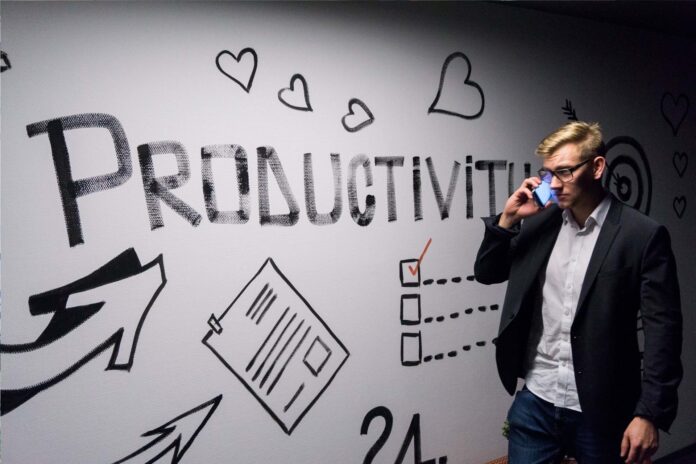A well-organized and clean environment holds the key to improved productivity in the workplace. Although many of us strive to keep our workspaces as clean and organized as we can, we almost always have to deal with clutter at some point. A cluttered workspace is known to affect a person’s thoughts and have a significant impact on his/her productivity. This is one of the reasons you need to not only keep your workspace clean and organized but your mind space as well. Here are a few simple yet effective ways to help you stay organized. You can also listen to the ‘How to Get Organized at Work’ Podcast if you prefer listening rather than reading.
1. Keep Your Brain Organized

a. Get Enough Sleep/Rest
Lack of sleep is known to take a toll on a person’s mood and productivity. Getting good quality and enough sleep helps your brain cells rejuvenate, enabling you to have a joyful and productive day. Individuals that sleep well at night are almost always jovial and better organized than those that get less than 3 hours of sleep. Health and sleep experts recommend getting at least 6 hours of sleep every night. A power nap in the afternoon can also help re-energize your brain cells, enabling you to push through the workday comfortably.
b. Try Not To Multitask
Although you might not notice it, handling more than one task at a time tends to overwork the brain, leaving you exhausted at the end of the day. Taking on a task after the other, however, reduces the strain allowing you to accomplish much more, faster. Multitasking might also trigger increased production of cortisol, a hormone responsible for increased stress levels.
c. Take A Break Between Tasks
Taking a break between tasks, or after a certain amount of time, allows brain cells to rejuvenate and revitalize, enabling you to handle tasks much faster. According to David Levitin, the author of “The Organized Mind” and a neuroscientist, taking a break between tasks, or distracting it from work for just a moment, gives you the much-needed energy and productivity boost.
2. Take Charge Of Your Time

a. Plan Your Time Well
Planning your time will help you achieve much more without feeling drained or wasting time. First, you need to identify urgent tasks and set goals for each. Goal setting helps you focus your energy on a specific task, which again reduces the likelihood of wasting time. There are also plenty of tools, e.g., the Long-term Goal Worksheet, that you can use to manage your goals more efficiently. You can know the best app for tracking work hours from myhours.com and utilize your time in a proper manner.
b. Have A Priority List
Prioritizing tasks based on their urgency is one of the best ways to improve productivity. Set your priorities right to ensure all important tasks and goals are done/achieved first to avoid a last-minute rush.
c. Use Time Blocks
Make a habit of allocating time for specific tasks, then work to complete the task within this time. Time blocking is tried and tested and works for those that commit to it. Time blocking allows you to put time limits for certain tasks and create deadlines for the same.
3. Keep Your Workspace Organized

a. Keep All Essential Within Reach
What do you regularly use while in the office? Take an inventory of these, and have them kept within an arm’s reach. Having these items/tools on your computer or desk should improve your productivity significantly. It also helps keep your desk clean and organized. Invest in a new desk from Teslyar.com.
b. Do Away With Non-Essentials
Is everything on your desk essential? If not, get rid of anything you don’t use regularly and keep them locked in the drawer or somewhere else. Doing so should reduce clutter, however small, from your desk/workspace, leaving a clean and productive look.
c. Create A Filing System For All Paperwork
If your work entails going through tons of paperwork, you might then want to have a filing system in place. Have files for different clients or projects, which can then be categorized according to their nature. Do not let paperwork stack up, but rather keep them in their respective files or filing cabinets. Be sure to trash or shred all non-essential paperwork too.
d. Keep Your Virtual Workspace Organized

Your work email is a workspace on its own. You thus need to keep it organized in the same way you would with physical paperwork. Come up with a plan or strategy to have all related emails and files together and within easy reach. You might also want to create a time block to govern how often you check and reply to emails. Emails can be rather distracting at times.
4. Organize Your Projects
a. Create Purpose-Driven Lists
Although to-do lists may come in handy at certain times, they aren’t as effective as a purpose-driven list. A purpose-driven list mainly focuses on the important and essential tasks, while a to-do list will include essential and non-essential tasks. Do away with the once useful to-do list and start creating purpose-driven lists for improved performance and productivity.
b. Keep Current Projects in the Forefront
This will help you work on the projects more efficiently.
c. Create Point To Point Milestones
This is particularly crucial when working on time-sensitive and long-term projects. Point to point milestones allows you to map your work and performance well. This helps you manage your time more efficiently, thus reducing the risk of delivering late.
Although basic, the tips outlined above can come in handy in helping you stay productive in the workplace. Use this as your basis for time management and productivity. The ONE Thing is a blueprint that will help you get work done fast and efficiently.


















